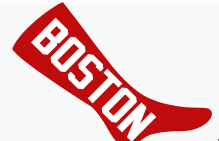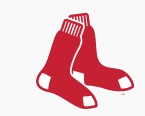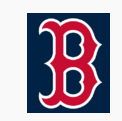
The Boston Red Sox are a professional baseball team based in Boston, Massachusetts, and a member of Major League Baseball's American League Eastern Division. Founded in 1901 as one of the American League's eight charter franchises, the Red Sox's home ballpark has been Fenway Park since 1912. The "Red Sox" name was chosen by the team owner, John I. Taylor, around 1908, following previous Boston teams that had been known as the "Red Stockings". They have played in 11 World Series, winning 7.
Boston was a dominant team in the new league, defeating the Pittsburgh Pirates in the first World Series in 1903 and winning four more championships by 1918. However, they then went into one of the longest championship droughts in baseball history, called by some the "Curse of the Bambino" after its alleged beginning with the Red Sox's sale of Babe Ruth to the rival Yankees two years after their world championship in 1918, an 86-year wait before the team's sixth World Championship in 2004. However, the team's history during that period was hardly one of futility, but was rather punctuated with some of the most memorable moments in World Series history, including Enos Slaughter's "mad dash" in 1946, the "Impossible Dream" of 1967, Carlton Fisk's home run in 1975, and Bill Buckner's error in 1986. Red Sox history has also been marked by the team's intense rivalry with the New York Yankees, arguably the fiercest and most historic in North American professional sports.[1][2][3]
The Boston Red Sox are owned by Fenway Sports Group, who also own Liverpool Football Club of the Premier League in England. The Red Sox are consistently one of the top MLB teams in average road attendance, while the small capacity of Fenway Park prevents them from leading in overall attendance.[4] From May 15, 2003 to April 10, 2013, the Red Sox sold out every home game — a total of 820 games (794 regular season) for a major professional sports record that lasted almost a decade.[5][6]
Nickname
The name Red Sox, chosen by owner John I. Taylor after the 1907 season, refers to the red hose in the team uniform beginning 1908. Sox had been previously adopted for the Chicago White Sox by newspapers needing a headline-friendly form of Stockings, as "Stockings Win!" in large type would not fit on a page. The team name "Red Sox" had previously been used as early as 1888 by a 'colored' team from Norfolk, Virginia.[7] The Spanish language media sometimes refers to the team as Medias Rojas, a translation of "red socks".
The Red Stockings nickname was first used for a baseball team by the Cincinnati Red Stockings, who were members of the pioneering National Association of Base Ball Players. Managed by Harry Wright, Cincinnati adopted a uniform with white knickers and red stockings, and earned the famous nickname, a year or two before hiring the first fully professional team in 1869. When the club folded after the 1870 season, Wright was hired by Boston businessman Ivers Whitney Adams[8] to organize a new team in Boston, and he did, bringing three teammates and the "Red Stockings" nickname along (Most nicknames were then only nicknames, neither club names nor registered trademarks, so the migration was informal). The Boston Red Stockings won four championships in the five seasons of the new National Association, the first professional league.
When a new Cincinnati club was formed as a charter member of the National League in 1876, the "Red Stockings" nickname was commonly reserved for them once again, and the Boston team was referred to as the "Red Caps". Other names were sometimes used before Boston officially adopted the nickname "Braves" in 1912; the club eventually left Boston for Milwaukee and is now playing in Atlanta, Georgia.

The Red Sox logo worn on uniforms in 1908, announcing the team's first official nickname
In 1901, the upstart American League established a competing club in Boston. (Originally, a team was supposed to be started in Buffalo, but league ownership at the last minute removed that city from their plans in favor of the expansion Boston franchise.) For seven seasons, the AL team wore dark blue stockings and had no official nickname. They were simply "Boston", "Bostonians" or "the Bostons"; or the "Americans" or "Boston Americans" as in "American Leaguers", Boston being a two-team city. Their 1901–1907 jerseys, both home and road, simply read "Boston", except for 1902 when they sported large letters "B" and "A" denoting "Boston" and "American." Newspaper writers of the time used other nicknames for the club, including "Somersets" (for owner Charles Somers), "Plymouth Rocks", "Beaneaters", the "Collinsites" (for manager Jimmy Collins)", and "Pilgrims."
For years many sources have listed "Pilgrims" as the early Boston AL team's official nickname, but researcher Bill Nowlin has demonstrated that the name was barely used, if at all, during the team's early years.[9] The origin of the nickname appears to be a poem entitled "The Pilgrims At Home" written by Edwin Fitzwilliam that was sung at the 1907 home opener ("Rory O’More" melody).[10] This nickname was commonly used during that season, perhaps because the team had a new manager and several rookie players. John I. Taylor had said in December 1907 that the Pilgrims "sounded too much like homeless wanderers."
The National League club in Boston, though seldom called the "Red Stockings" anymore, still wore red trim. In 1907, the National League club adopted an all-white uniform, and the American League team saw an opportunity. On December 18, 1907, Taylor announced that the club had officially adopted red as its new team color. The 1908 uniforms featured a large icon of a red stocking angling across the shirt front. For 1908, the National League club returned to wearing red trim, but the American League team finally had an official nickname, and would remain the "Red Sox" for good.
The name is often shortened to "Bosox" or "BoSox", a combination of "Boston" and "Sox" (similar to the "ChiSox" in Chicago or the minor league "PawSox" of Pawtucket). Sportswriters sometimes refer to the Red Sox as the Crimson Hose[11] and the Olde Towne Team. Recently, media has begun to casually call them the "Sawx", reflecting how the word is pronounced with a New England accent. However, most fans simply refer to the team as the "Sox" when the context is understood to mean Red Sox.[12]
The team's formal corporate name has been said to be the "Boston American League Baseball Company" or "Club", which seems to be borne out by this current-day photograph of the street-door to the stadium, at 24 Yawkey Way; that entrance also figures in Robert B. Parker's Spenser-and-baseball novel Mortal Stakes.
History
Main article: History of the Boston Red Sox
1901–1919

The 1901 Boston Americans team photograph
In 1901, the minor Western League, led by Ban Johnson, declared its equality with the National League, then the only major league in baseball. Johnson changed the name of the league to the American League, leading teams in his league to be christened with the unofficial nickname "Americans". This was especially true in the case of the new Boston franchise, which would not adopt an official nickname until 1908.
The upstart league placed franchises in Baltimore, Maryland and Buffalo. After looking at his new league, Ban Johnson decided that he would need a team in Boston to compete with the National League team there, and so cancelled the Buffalo club's franchise, offering one to a new club in Boston. Playing their home games at Huntington Avenue Grounds, the Boston franchise finished second and third before capturing their first pennant in 1903 and repeating the next year. Those teams were led by manager and star third baseman Jimmy Collins, outfielders Chick Stahl, Buck Freeman, and Patsy Dougherty, and pitcher Cy Young, who in 1901 won the pitching Triple Crown with 33 wins (41.8% of the team's 79 games), 1.62 ERA and 158 strikeouts.[13] His 1901 to 1904 seasons rank among the best four-year runs ever.
In 1903, Boston participated in the first modern World Series, beating the favored Pittsburgh Pirates, winners of the NL pennant, by six and a half games, winning the best-of-nine series five games to three. Aided by the modified chants of "Tessie" by the Royal Rooters fan club and by its stronger pitching staff, the Americans managed to overcome the odds, and win the World Series.

Iconic photo of the Huntington Avenue Grounds before the first modern World Series game
The 1904 club was almost as good as the previous team, but due to the surprise emergence of the New York Highlanders, the Boston club found itself in a tight pennant race through the last games of the season. A predecessor to what would become a storied rivalry, this race featured such controversial moves as the trade of Patsy Dougherty to the Highlanders for Bob Unglaub. The climax of the season occurred on the last, dramatic doubleheader at the Highlanders’ home stadium, Hilltop Park. In order to win the pennant, the Highlanders needed to win both games. With Jack Chesbro, the Highlanders' 41-game winner, on the mound, and the score tied 2–2 with a man on third in the top of the ninth, a spitball got away from Chesbro and Lou Criger scored the go-ahead run on one of the most famous wild pitches in history.


 2013 Boston Red Sox season
2013 Boston Red Sox season



















